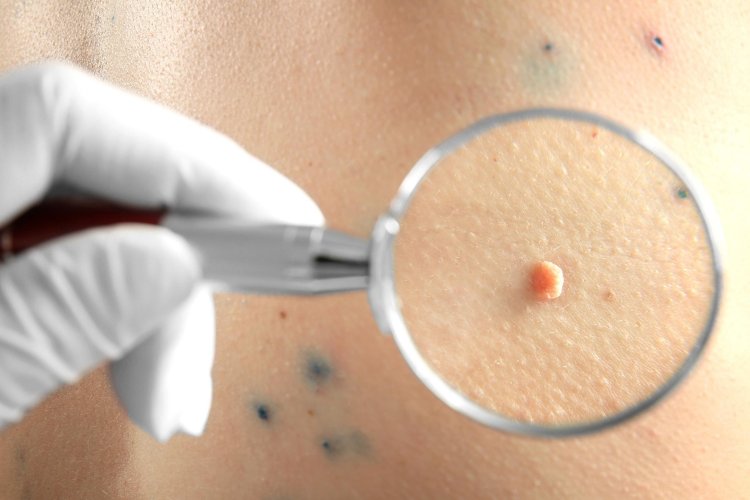Enhance Your Skin, Safely: The Ins and Outs of Mole Removal
Moles, those small clusters of pigmented cells on the skin, are usually harmless. However, when they cause discomfort, affect appearance, or raise concerns about potential health risks, mole removal, known as "ben aldırma" in Turkish, becomes a consideration. Let's delve deeper into this dermatological procedure

What is Mole Removal?
Mole removal is a surgical or laser-based dermatological procedure aimed at eliminating unwanted or suspicious moles from the skin's surface. While some opt for mole removal for cosmetic reasons, others undergo it due to medical concerns, such as the possibility of skin cancer.
Why is Mole Removal Performed?
The reasons for mole removal are multifaceted:
Cosmetic Enhancement:
Many individuals seek mole removal to improve their appearance, especially when moles are large, raised, or located prominently on the face or body.
Health Concerns:
Moles exhibiting irregular borders, color changes, or rapid growth may signify potential malignancy. In such cases, removal is necessary to biopsy the tissue and assess for cancer.
Discomfort or Irritation:
Moles located in areas prone to friction, such as underarms or along clothing lines, can cause discomfort or irritation. Removing them can alleviate these symptoms.
Who Can Undergo Mole Removal?
Virtually anyone with bothersome or suspicious moles can undergo removal. However, a dermatologist's evaluation is crucial to determine the necessity and approach for removal. They assess factors like the mole's size, location, and characteristics to recommend the most suitable course of action.
Preoperative Preparation for Mole Removal
Before the procedure, patients typically:
Consult with a Dermatologist:
This initial consultation involves a thorough examination of the moles and discussion of concerns. If necessary, a biopsy may be performed to assess for malignancy.
Medication Adjustments:
Patients may need to temporarily stop certain medications, like blood thinners, to minimize bleeding risks during the procedure.
Follow Preoperative Instructions:
Specific instructions regarding fasting or skincare routines may be provided to optimize the procedure's success.
How is Mole Removal Performed?
Several techniques may be employed:
Excision:
Surgically cutting out the mole using a scalpel or surgical scissors is common for larger or suspicious moles. The wound is then closed with sutures.
Shave Excision:
This technique involves shaving off the mole's surface with a blade, leaving the underlying skin intact. It's suitable for raised, benign moles.
Laser Removal:
Laser energy is used to break down the mole's pigment, causing it to fade or disappear gradually. This approach is preferred for smaller, benign moles on visible areas like the face.
The choice of technique depends on factors like the mole's characteristics and the patient's preferences.
Postoperative Care and Recovery
After mole removal, patients are advised to:
Keep the Wound Clean:
Proper wound care is essential to prevent infection. Patients may need to apply topical ointments and keep the area dry.
Avoid Sun Exposure:
Protecting the treated area from sun exposure helps minimize scarring and hyperpigmentation.
Attend Follow-up Appointments:
Regular follow-ups allow the healthcare provider to monitor healing progress and address any concerns.
Frequently Asked Questions About Mole Removal
Does mole removal hurt?
Local anesthesia is typically used to numb the area during the procedure, minimizing discomfort. Some soreness or mild discomfort post-procedure is normal.
Will mole removal leave a scar?
Scarring varies based on factors like the removal technique and individual skin healing. While some scarring may occur, it often fades over time.
Are there risks associated with mole removal?
While complications are rare, risks include infection, bleeding, and scarring. Removing cancerous moles may require additional treatment.
In essence, mole removal is a versatile procedure addressing both cosmetic and medical concerns. By consulting with a qualified dermatologist and following pre- and postoperative instructions diligently, individuals can navigate the process safely and achieve optimal outcomes.
Disclaimer:
The information provided in this article is for educational purposes only and should not be considered medical advice. If you have any health concerns or are experiencing symptoms, it is important to consult with a healthcare professional, such as a doctor or clinic, for proper diagnosis and treatment. Always seek the advice of your doctor or other qualified health provider with any questions you may have regarding a medical condition. Do not disregard professional medical advice or delay in seeking it because of something you have read in this article.
Hashtags
#MoleRemoval #Dermatology #Skincare #Health #CosmeticSurgery
What's Your Reaction?





















